28+ Sample Move Out Checklist
-
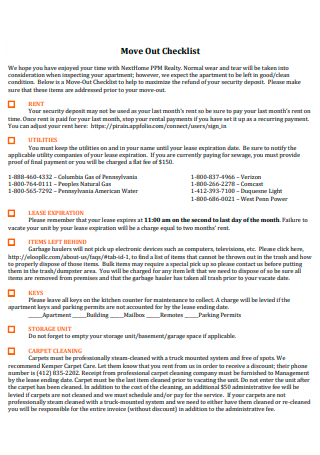
Move Out Checklist Template
download now -
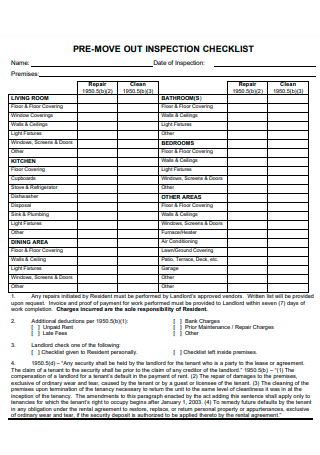
Pre Move Out Inspection Checklist
download now -
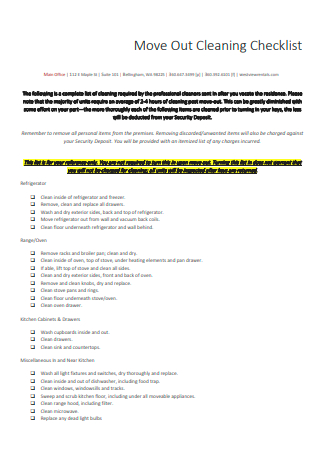
Move Out Cleaning Checklist
download now -
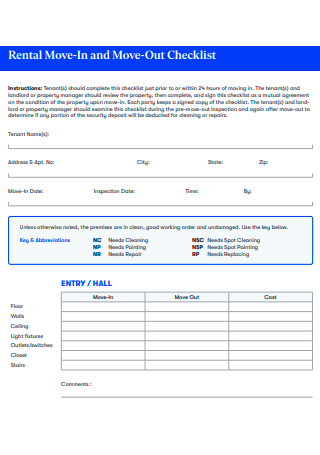
Rental Move In and Move Out Checklist
download now -
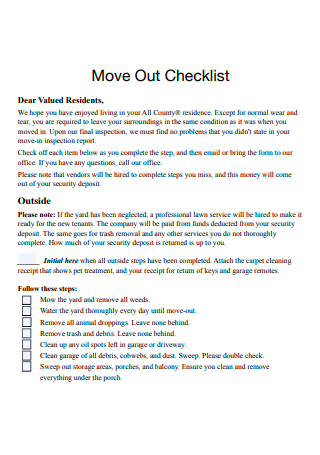
Basic Move Out Checklist
download now -
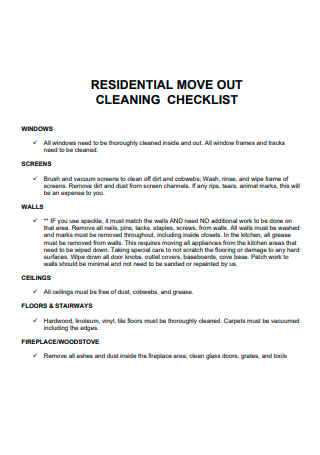
Residential Move Out Cleaning Checklist
download now -
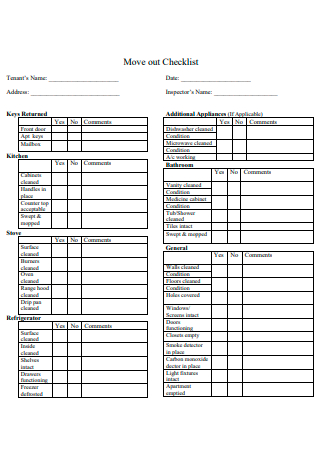
Formal Move out Checklist
download now -
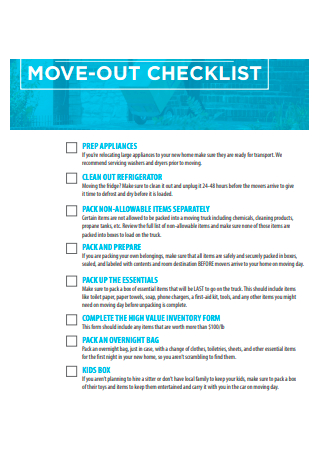
Move Out Checklist Example
download now -
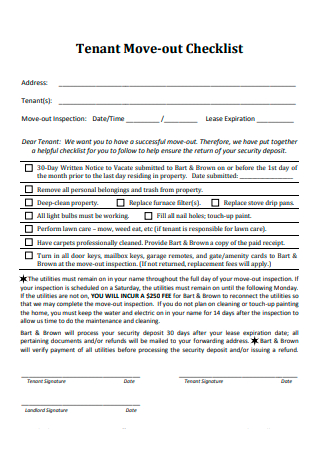
Tenant Move Out Checklist
download now -

Standard Move Out Checklist
download now -
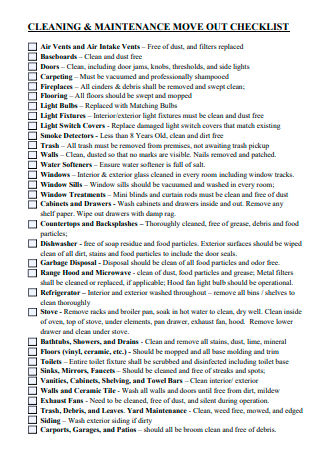
Cleaning and Maintenance Move Out Checklist
download now -
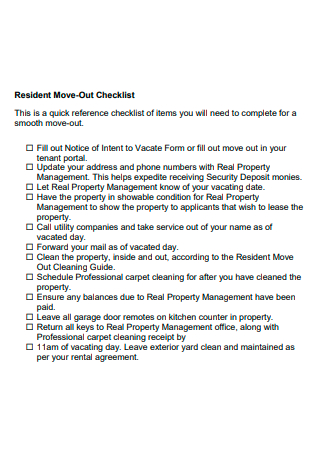
Resident Move Out Checklist
download now -

Printable Move Out Checklist
download now -
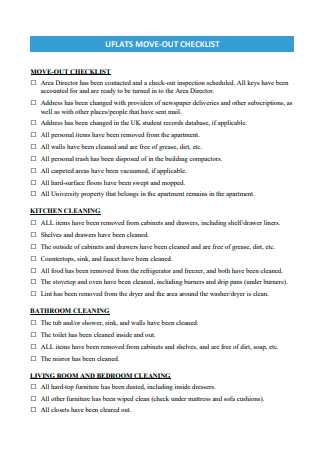
Move Out Checklist in PDF
download now -

Tenant Move In and Move Out Property Checklist
download now -
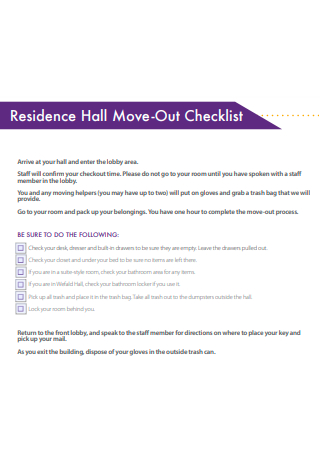
Residence Hall Move Out Checklist
download now -
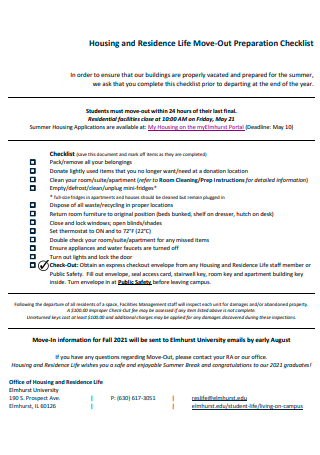
Housing and Residence Life Move Out Preparation Checklist
download now -
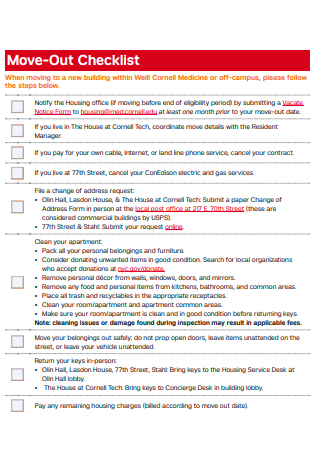
Sample Move Out Checklist
download now -

Move Out Planning Checklist
download now -
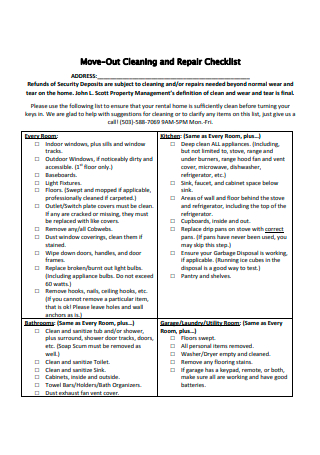
Move Out Cleaning and Repair Checklist
download now -

Move Out Inspection Checklist
download now -
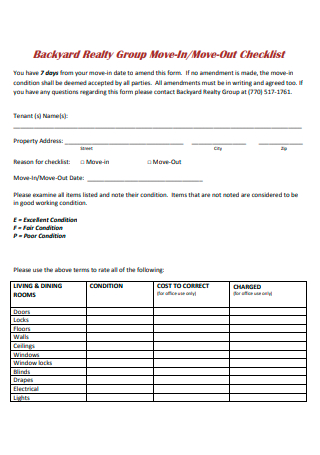
Group Move Out Checklist
download now -
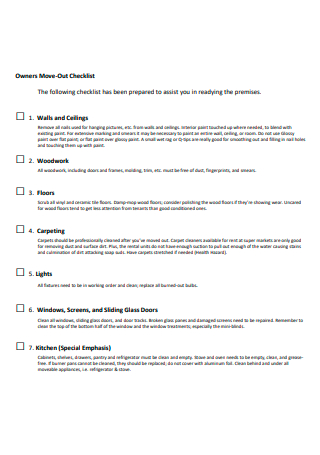
Owners Move Out Checklist
download now -
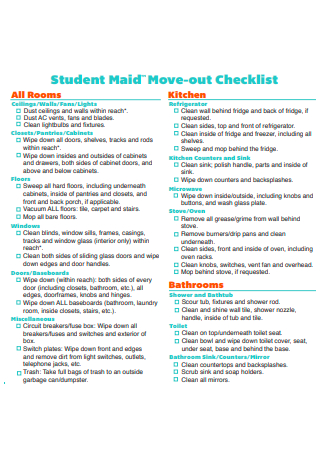
Student Move Out Checklist
download now -
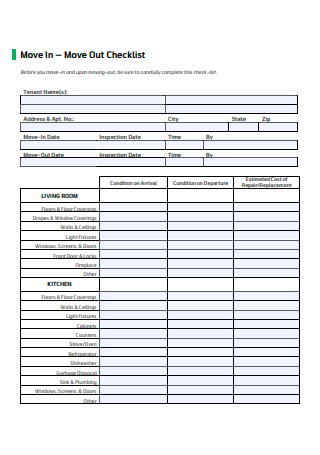
Move In Move Out Checklist
download now -
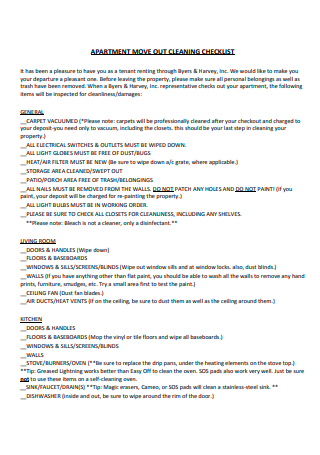
Apartment Move Out Cleaning Checklist
download now -
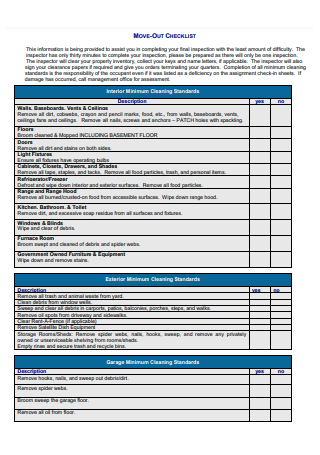
Move Out Checklist Format
download now -
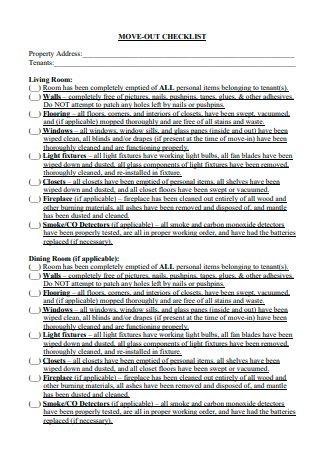
Draft Move Out Checklist
download now -
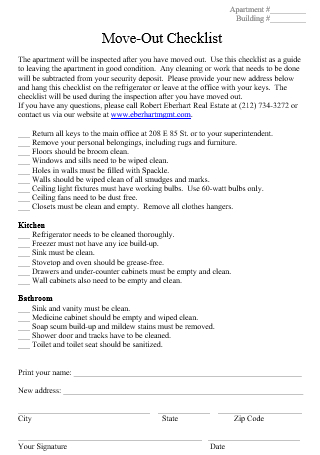
Move Out Checklist in DOC
download now
FREE Move-out Checklist s to Download
28+ Sample Move Out Checklist
What Is a Move Out Checklist?
Why Is a Move Out Checklist Important?
What to Prepare before Moving Out
How to Write a Move Out Checklist
Additional Things to Prepare for a New Place
FAQs
What if the date of tenancy has ended?
What is necessary for ending a rental agreement?
What is a walk-through inspection?
What Is a Move Out Checklist?
A tenant move-out checklist is a document that landlords should attach to the original lease agreement as an amendment. This checklist informs the tenant on the procedures and responsibilities they must fulfill when they vacate the property.
The move-out checklist provided by each landlord may differ. Some people prefer to break out specific processes by room, while others just offer broad guidelines. A move-out Inspection Checklist enables the landlord to ensure that no other item was discarded or forgotten without prior discussion and easily prepare it for the next potential tenant. Otherwise, they could estimate the time it takes for the property to be thoroughly cleaned and prepared for the next tenant to move in.
Why Is a Move Out Checklist Important?
When it comes to the security deposit, move-out checklists are extremely crucial. Tenant-landlord conflicts over security deposits are a common occurrence. It will assist to reduce these difficulties and other issues that may surface if the renter understands the correct processes for moving out, including the condition in which they must depart the rented property. Following these procedures and following the lease’s conditions will assist to guarantee that the renter gets their security deposit in full. Even though the move-out checklist form is generic and has a structure, you should still make your checklist tailored to your requirements as well as the demands of your property. The templates prepared in this article merely act as a reference and although you can use it as your base, you would still need to do adjustments so it suits your rental situation.
What to Prepare before Moving Out
No one moves out right then and there from their property unless major issues and emergencies arise, it is better to avoid the hassle of moving out without any preparations and risk losing items or forgetting to clarify certain details. But before we go into the actual rental home move-out checklist, there are also a few things you need to prepare before moving out. Haart provides you a list of things you should check on before leaving with packed bags.
How to Write a Move Out Checklist
Creating a move-out essentials list will keep you organized and on top of the details in your Residential Rental other than bills and documents that need to be sorted out as well. Both a tenant and the landlord have their respective responsibilities in handling the property and need to meet certain conditions that the two parties have agreed upon. Check out the move-out checklist example available to view which template fits your needs. Otherwise, continue reading to know the steps in filling out the checklist.
Step 1: Make Sure All the Rooms Are Clean
This entails making sure that the floors, walls, windows, doorknobs, and even light switches are free from residue or dirt that will otherwise require extra cleaning from the landlord. You have to return all of the walls to their original state. Remove everything from the walls, including nails and hooks, and patch any holes. Remove all dust from shelves, exhaust fans, ledges, and light fixtures, you can even get rid of all the cobwebs. Make sure there are no stains on the carpet. Hire a professional to deep clean the carpet if at all possible. Any lightbulbs that aren’t working should be replaced. If you are moving heavy furniture around, take care to protect the floor.
Step 2: Check the Kitchen for Leftovers
For the next step, you need to make sure to clean the kitchen of any leftover food that can rot, attract pests, or otherwise cause bad odor to spread within the enclosed walls of the property. Disinfect countertops, stove, and even the fridge, check to see that there aren’t any burns, cuts, or large stains. This also involves you making sure that all the appliances found in the kitchen are in working condition, otherwise if there are one or two malfunctions then be sure to notify the landlord ahead. It would also be helpful to the landlord if you were to clean the sinks and faucet, as well as sweep and mop the floors and tidy up the windows to rid them of dust or stains.
Step 3: Clean Private and Common Rooms
As private rooms, bathrooms, and common rooms are most often used, it is a given that they will collect the most amount of dirt. So dusting, vacuuming, or mopping the areas that have collected residue will be necessary. Especially areas that had furniture over them and once it is removed, it will be easily reached. After removing all your belongings from the closets, cabinets, and drawers, be sure to check that there are no pests living in them. Check your windows for cracks or scratches and clean them properly. Including the shower or tub area with bleach and the bathroom tiles are spotless.
Step 4: Review the Outside
After ensuring that the interior of the property has been thoroughly cleaned, next would be the exterior. If you have a garage, make sure that all your belongings are removed from the premises. Including potted plants or decorations that you might have hung on trees, patio, or even on the roof. Lastly, see to it that the grass is neatly trimmed and put out weeds if you have a front or backyard.
Step 5: Miscellaneous
As for the last step, after ensuring that both interior and exterior parts of the house are thoroughly cleaned and void of your belongings, the next would be to double-check any spot you might have missed. Such as an attic or basement. Make sure that any lingering odor in the house has been dealt with, otherwise, if it requires extra attention, notify your landlord immediately. Collect your keys and return them to the landlord. Dispose of any garbage left and before leaving the property, make sure the lights are off and sinks are shut tight.
Additional Things to Prepare for a New Place
Apartment moves are tough to deal with, and as mentioned before it is a process that will drain your energy continuously until you would finally settle down. Updater curated this list to better prepare you for moving into a new rental property. This list could also be useful and act as a supporting move-out checklist for landlords since they could look into some of the things mentioned to ensure their tenants are satisfied with their stay or know the potential reasons that they could improve in the next rental move.
FAQs
What if the date of tenancy has ended?
According to Citizens Advice, it’s a fixed-term tenancy if your tenancy agreement specifies an end date. You are not required to vacate your house at the conclusion of your fixed-term lease. If you’re a guaranteed shorthold tenant, you and your landlord can discuss whether you want to extend your tenancy for another set term or continue on a rolling basis. When a tenancy is on a rolling basis, it lasts from month to month or week to week.
What is necessary for ending a rental agreement?
If you wish to cancel your rental agreement, you must typically notify your landlord in advance, which is known as providing notice. If you don’t give a notice, you could have to pay rent for the rest of the agreement’s duration. If you have a month-to-month lease and only give your landlord notice 15 days before you intend to move out, you will most likely be responsible for paying rent for the full month, not just the 15 days you will be in the property. Make sure to review the initial House Rental Agreement to check the details the landlord and tenant have agreed upon.
What is a walk-through inspection?
Tenants are expected to return the rental unit in the same condition as when they first moved in. If a tenant wants it, many jurisdictions, such as New York and California, require landlords to conduct walk-through inspections before a tenant moves out to check for damage beyond regular wear and tear. During the inspection, the landlord will point out any concerns that may result in security deposit deductions. The landlord may allow the renter to repair the damages before moving out in order to obtain their whole security deposit back. It won’t hurt to check your Rental Contracts here and there to stay updated with the conditions.
Landlords and tenants have an obligation to follow through the responsibility and following the conditions they both have agreed upon. This includes the aftercare with moving out of the property. In easing both the lives of the landlords and tenants, the presence of a move-out checklist definitely will lessen the stress and hassle that both parties will have to be dealing with.
